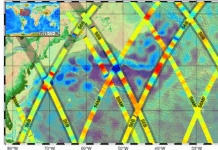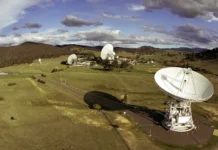Nikon’s DSP-100: A Leap Forward in Semiconductor Manufacturing
Nikon Corporation, a global leader in optical technology, is set to revolutionize the semiconductor manufacturing industry with its latest innovation, the Digital Lithography System DSP-100. Slated for launch in July 2025, this cutting-edge system is designed to enhance back-end semiconductor manufacturing processes, particularly for advanced packaging applications. The DSP-100 stands out for its ability to handle large substrates up to 600mm square, offering a high resolution of 1.0 micrometer.
Understanding the Technicalities
Before delving deeper into the capabilities of the DSP-100, let’s break down some of the technical jargon. A micrometer, often denoted as μm, is one-millionth of a meter, equivalent to one-thousandth of a millimeter. In the context of semiconductor manufacturing, this unit of measurement is crucial as it indicates the precision with which circuit patterns can be created. Another term, L/S or Line and Space, refers to the width of circuit lines and the spaces between them, which is a critical factor in determining the resolution of lithography systems.
Release Overview
Nikon has announced that the DSP-100 will officially hit the market in July 2025, with its full release scheduled for the fiscal year 2026. This aligns with the company’s strategic plan to address the increasing demand for high-performance semiconductor devices driven by technological advancements in communication technologies such as the Internet of Things (IoT) and artificial intelligence (AI).
Development Background
The semiconductor industry is undergoing rapid transformation, fueled by the widespread adoption of IoT and generative AI technologies. These advancements have led to a surge in information processing requirements, particularly in data centers. To meet these demands, there is an increasing need for high-performance semiconductor devices. Furthermore, as packaging technologies like chiplets, which connect multiple chips side by side, continue to evolve, there is a growing demand for finer circuit patterns and larger package sizes.
The DSP-100 is designed to address these challenges by supporting panel-level packaging (PLP) using resin or glass substrates. This approach is expected to drive growth in the semiconductor industry as it allows for more efficient and cost-effective manufacturing processes.
Performance Overview
The DSP-100 boasts impressive performance metrics, including a resolution of 1.0μm L/S and an overlay accuracy of ±0.3μm. The system is equipped with a light source equivalent to i-line technology, which is commonly used in photolithography processes. It supports large square substrates up to 600x600mm, offering a throughput of 50 panels per hour when using 510x515mm substrates.
Key Benefits
Combining High Resolution and Productivity
One of the standout features of the DSP-100 is its ability to combine high resolution with productivity. Nikon has integrated its high-resolution semiconductor lithography technology with multi-lens technology from its flat panel display (FPD) lithography systems. This integration allows the DSP-100 to achieve high resolution, excellent overlay accuracy, and high productivity—processing up to 50 panels per hour.
The multi-lens technology, a proprietary innovation by Nikon, involves exposing multiple projection lenses in an array and precisely controlling them to mimic the effect of a single giant lens. This enables patterning over a wider area with a single exposure, significantly enhancing the system’s efficiency and output.
Maskless Operation for Large Advanced Packaging Applications
Traditional lithography systems require photomasks with circuit patterns, which can be restrictive in terms of size and flexibility. The DSP-100, however, utilizes a spatial light modulator (SLM) to directly project circuit patterns onto substrates, eliminating the need for photomasks. This maskless operation provides greater flexibility for large, advanced packaging applications, streamlining the development process and reducing both cost and lead time for customers.
Support for Large Square Substrates – 9x Productivity Compared to Wafers
The DSP-100’s capability to handle large square substrates up to 600×600mm is a game-changer for the semiconductor industry. When used for 100mm-square large packages, the system’s productivity per substrate is nine times higher than when utilizing traditional 300mm wafers. This increased productivity is complemented by the system’s high-precision correction for substrate warpage and deformation, which reduces production costs and supports greener manufacturing practices.
The DSP-100’s use of maskless technology, combined with solid-state light sources, minimizes maintenance costs and further enhances its environmental sustainability. These features make the DSP-100 a compelling choice for semiconductor manufacturers looking to optimize their processes and reduce their carbon footprint.
Good to Know: Industry Reactions and Implications
The introduction of Nikon’s DSP-100 is likely to have significant implications for the semiconductor industry. By enabling more efficient and cost-effective manufacturing processes, the DSP-100 could accelerate the development and deployment of advanced semiconductor devices, particularly in data centers and other high-performance computing applications.
Industry experts are optimistic about the potential impact of the DSP-100, noting that its high resolution and productivity could set new standards for semiconductor manufacturing. The system’s maskless operation and support for large substrates are particularly noteworthy, as they address key challenges faced by manufacturers and pave the way for more versatile and efficient production processes.
Conclusion
Nikon’s Digital Lithography System DSP-100 represents a significant advancement in semiconductor manufacturing technology. With its high resolution, productivity, and support for large substrates, the DSP-100 is poised to meet the growing demands of the semiconductor industry driven by advancements in IoT and AI technologies. As manufacturers look to optimize their processes and reduce costs, the DSP-100 offers a promising solution that combines cutting-edge technology with environmental sustainability.
For more information on Nikon’s DSP-100 and its implications for the semiconductor industry, interested readers can visit Nikon’s official website.
For more Information, Refer to this article.

































